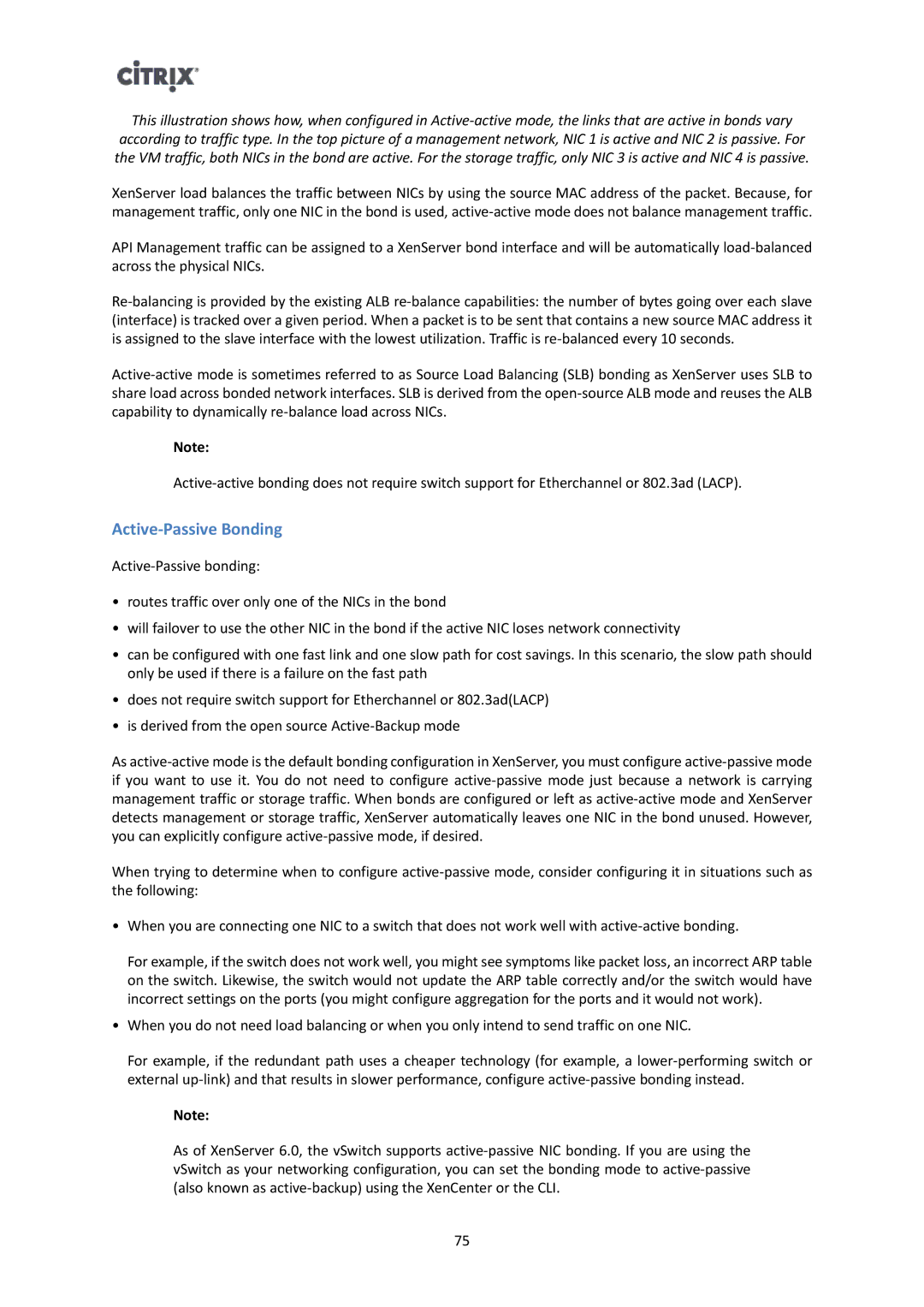This illustration shows how, when configured in
XenServer load balances the traffic between NICs by using the source MAC address of the packet. Because, for management traffic, only one NIC in the bond is used,
API Management traffic can be assigned to a XenServer bond interface and will be automatically
Note:
Active-Passive Bonding
•routes traffic over only one of the NICs in the bond
•will failover to use the other NIC in the bond if the active NIC loses network connectivity
•can be configured with one fast link and one slow path for cost savings. In this scenario, the slow path should only be used if there is a failure on the fast path
•does not require switch support for Etherchannel or 802.3ad(LACP)
•is derived from the open source
As
When trying to determine when to configure
•When you are connecting one NIC to a switch that does not work well with
For example, if the switch does not work well, you might see symptoms like packet loss, an incorrect ARP table on the switch. Likewise, the switch would not update the ARP table correctly and/or the switch would have incorrect settings on the ports (you might configure aggregation for the ports and it would not work).
•When you do not need load balancing or when you only intend to send traffic on one NIC.
For example, if the redundant path uses a cheaper technology (for example, a
Note:
As of XenServer 6.0, the vSwitch supports
75
